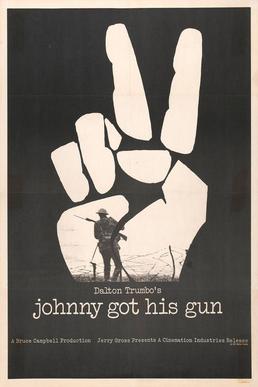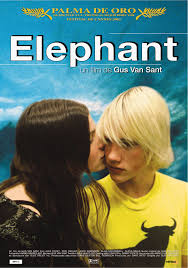The 1986 film, Invaders from Mars, opens with a dark and stormy night.
12 year-old David Gardner (Hunter Carson, son of actress Karen Black and filmmaker L.T. Kit Carson), who dreams of growing up to become an astronaut, witnesses something strange happening outside of his bedroom window. He watches as a spaceship lands on a nearby hill and apparently drills itself into the ground. The next morning, David convinces his father (Timothy Bottoms) to go out to the hill and see what he can find. When his father returns, he says that he didn’t see anything strange at the hill. However, he is now acting strangely, no longer showing emotion.
Soon, everyone in the small town is also acting strangely, from David’s mother (Laraine Newman) to his teacher (Louise Fletcher). David notices that everyone has a mysterious mark on the back of their neck. Even more alarmingly, he walks in on his teacher eating a mouse. Investigating the hill himself, David discovers that his father was lying about nothing being there. Instead, there’s a cavernous spaceship that is patrolled by aliens! A creature with a giant brain has taken control of almost everyone in David’s life. David discovers that the hill right outside of his house is now the headquarters of an intergalactic invasion. It’s a war of the worlds and David is stuck right in the middle.
Fortunately, David does have a few allies. The aliens have not managed to take control of everyone. The school nurse (Karen Black) believes David and helps him explore the spaceship. The surprisingly nice General Wilson (James Karen) is not only willing to launch a military operation on the advice of a 12 year-old but he also doesn’t have any problem allowing that 12 year-old to take de facto command of his soldiers. Can David save his community from the Martians?
A remake of the 1953 sci-fi classic, Invaders from Mars was directed by Tobe Hooper, the Texas-born director who was best known for The Texas Chainsaw Massacre and Poltergeist. At first, the deliberately campy Invaders from Mars might seem like an unexpected film from Hooper but actually, it has quite a bit in common with Hooper’s other credits. Like The Texas Chainsaw Massacre, it plays out like an increasingly surreal dream, one with an emphasis on isolation. Like Poltergeist, it’s ultimately a satire of suburban and small town conformity. (Indeed, one could argue that Invaders From Mars is Poltergeist without the interference of Steven Spielberg.) If the original Invaders From Mars was about the dangers of communism, the remake is about the danger of losing your childhood imagination and just becoming a mindless drone.
Invaders From Mars is often a deliberately silly film. Sometimes, it’s definitely a bit too silly for its own good, hence the guilty in guilty pleasure. That said, whenever I see it, I can’t help but smile at how quickly General Wilson starts taking orders from David. (James Karen plays the role with such earnestness that General Wilson seems to be less concerned with David’s age but instead just happy that he has someone around who can tell him what he needs to do.) But it makes sense when you consider that the film is meant to be a child’s fantasy of what would happen if there was an alien invasion. Who wouldn’t want to be the one telling the adults how to save the planet? For all the aliens and the mind control, this is a rather innocent film. Featuring entertaining performances from Hunter Carson, Timothy Bottoms, Karen Black, and the great James Karen, Invaders From Mars is an entertaining daydream of interstellar conquest.
Previous Guilty Pleasures
- Half-Baked
- Save The Last Dance
- Every Rose Has Its Thorns
- The Jeremy Kyle Show
- Invasion USA
- The Golden Child
- Final Destination 2
- Paparazzi
- The Principal
- The Substitute
- Terror In The Family
- Pandorum
- Lambada
- Fear
- Cocktail
- Keep Off The Grass
- Girls, Girls, Girls
- Class
- Tart
- King Kong vs. Godzilla
- Hawk the Slayer
- Battle Beyond the Stars
- Meridian
- Walk of Shame
- From Justin To Kelly
- Project Greenlight
- Sex Decoy: Love Stings
- Swimfan
- On the Line
- Wolfen
- Hail Caesar!
- It’s So Cold In The D
- In the Mix
- Healed By Grace
- Valley of the Dolls
- The Legend of Billie Jean
- Death Wish
- Shipping Wars
- Ghost Whisperer
- Parking Wars
- The Dead Are After Me
- Harper’s Island
- The Resurrection of Gavin Stone
- Paranormal State
- Utopia
- Bar Rescue
- The Powers of Matthew Star
- Spiker
- Heavenly Bodies
- Maid in Manhattan
- Rage and Honor
- Saved By The Bell 3. 21 “No Hope With Dope”
- Happy Gilmore
- Solarbabies
- The Dawn of Correction
- Once You Understand
- The Voyeurs
- Robot Jox
- Teen Wolf
- The Running Man
- Double Dragon
- Backtrack
- Julie and Jack
- Karate Warrior





 How much keeffe is in this movie?
How much keeffe is in this movie?




